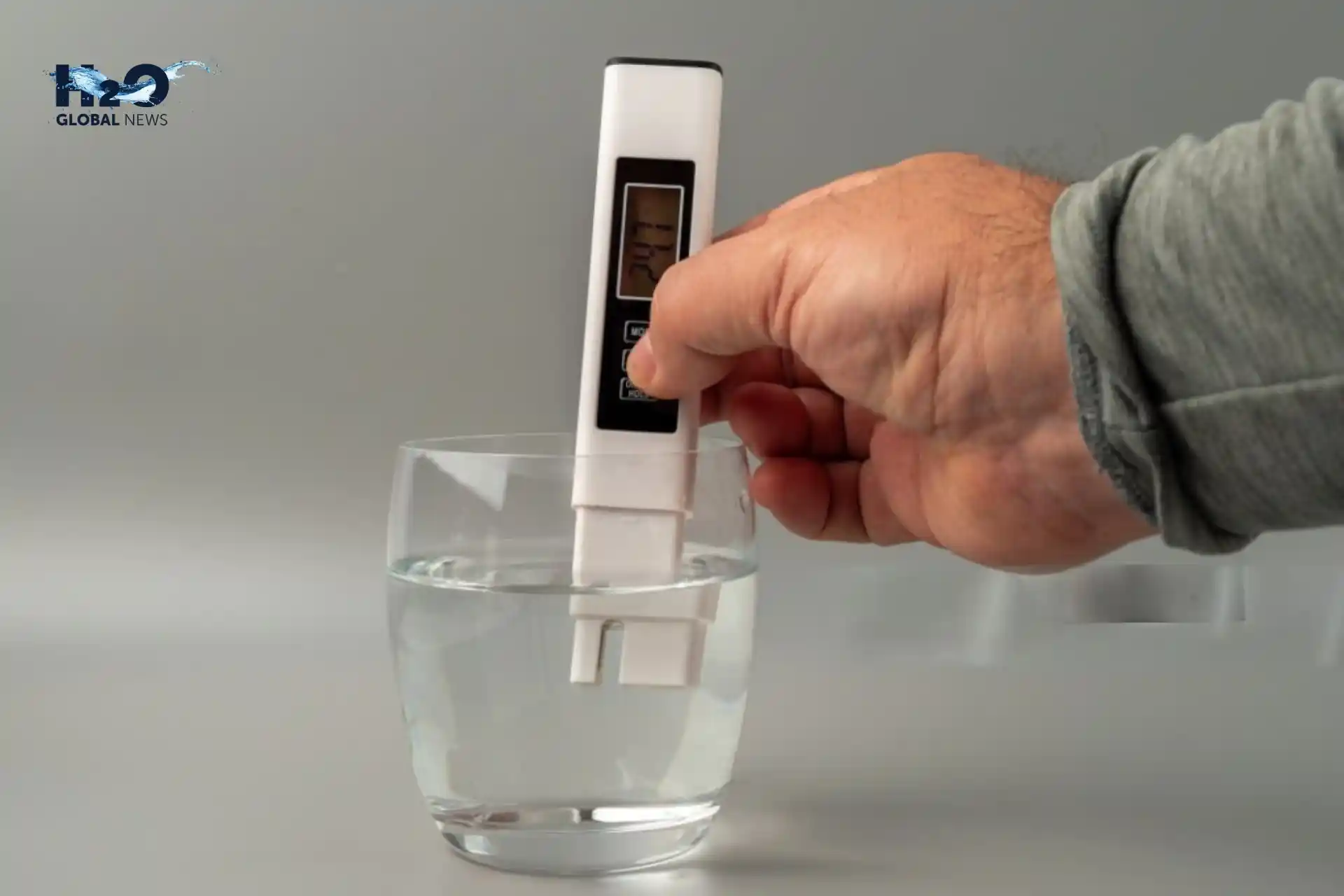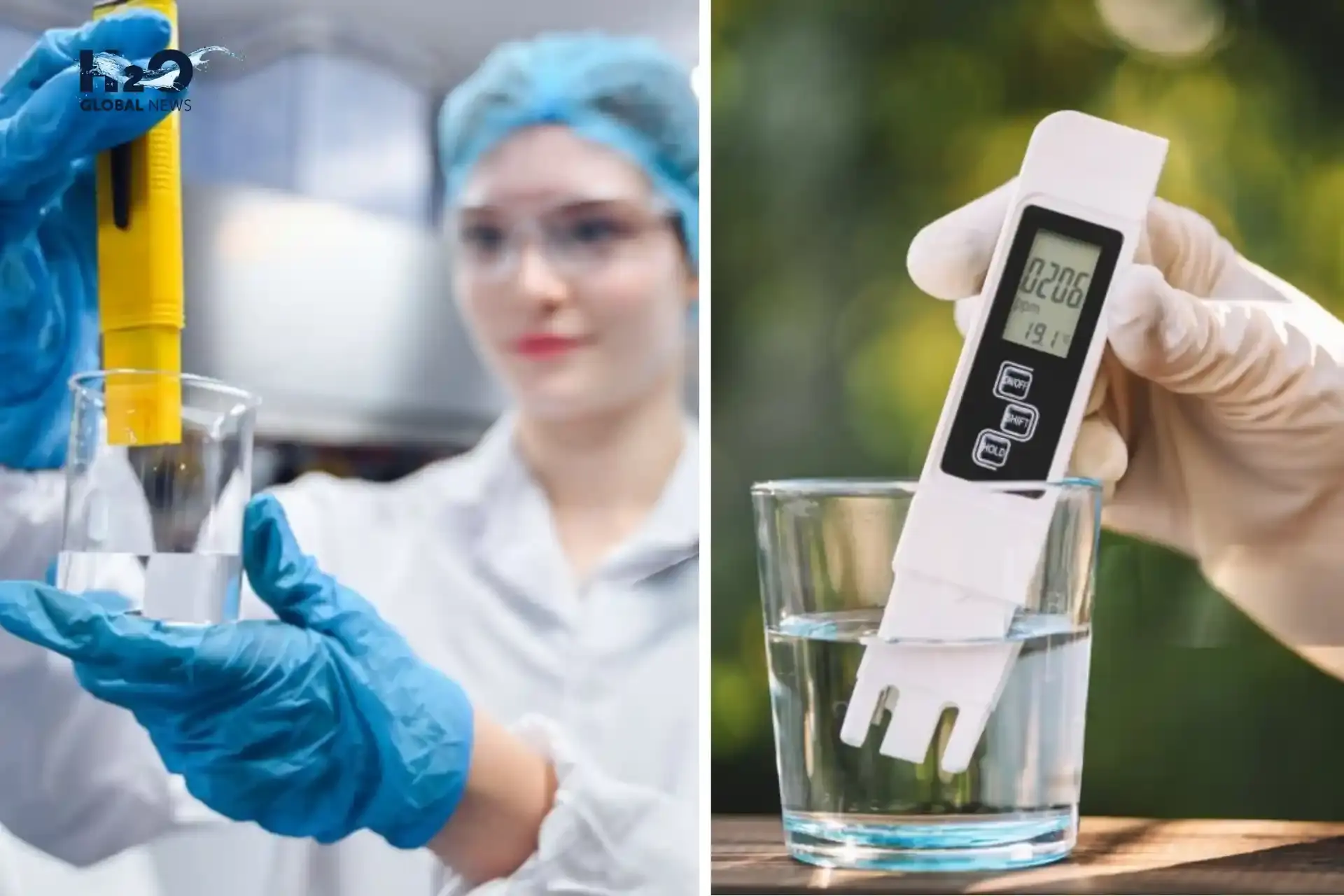Water is considered a universal solvent because of its ability to dissolve and absorb molecules from various substance. It may look clean, but sometimes it’s hiding something you can’t see with your eyes. They don’t float on top or settle at the bottom, they’re fully mixed in with the water.
Let’s explore what are total dissolved solids in water, why they matter, how you can test them, and how to reduce total dissolved solids in your water.
What Is Meant by Total Dissolved Solids?
The water we use every day might look clean, but it often carries hidden particles that we can’t see. As water flows through treatment plants and pipelines, it picks up various substances. While harmful bacteria and dirt are removed during treatment, the water may still contain tiny dissolved particles, some natural, some from chemicals. These are called Total Dissolved Solids (TDS). High TDS levels can affect how water tastes, how safe it is to drink, and even how it works with appliances. That’s why checking the TDS level of your water is important if you want clean, healthy, and good-tasting water for your family.
These solids can be:
- Minerals like calcium and magnesium
- Salts like sodium chloride
- Metals like lead or iron
- Organic matter from plants or animals
- Chemicals from farming or factories
Since water dissolves so many types of particles, it earns the title of “universal solvent.” These solids can come from natural rocks, old water pipes, water filters that aren’t cleaned properly, or even pollution. So, when we talk about TDS in water, we’re talking about everything, good and bad, that’s dissolved in it.
Why Do Total Dissolved Solids Matter?
Measuring TDS helps you understand how pure or clean your water is. Here’s why it matters:
- Taste and Smell
High TDS can change the taste of water. It might taste salty, metallic, or bitter. Sometimes, it smells weird, too. - Health Concerns
Not all TDS is harmful, but some can be. High amounts of certain metals or salts can cause health problems, especially for babies, the elderly, or people with kidney issues. - Appliance Damage
Water with a lot of total dissolved salts can damage kettles, washing machines, and water filters. It causes scale buildup inside the appliances. - Skin and Hair Problems
Hard water (with high TDS) can make your skin dry and your hair rough or dull after showers. - Filter Check
If you’re using a water purifier, testing the TDS helps you know if your filter is still working well or needs replacing. - Cleaning
High TDS can leave white spots on utensils, dull your clothes, and prevent soap from lathering properly.
Where Do These TDS Solids Come From?
There are many ways that total dissolved solids in water can show up:
- Natural Sources: Water flows through rocks and picks up minerals and salts.
- Old Pipes: Rust, metal, and sediment can enter the water system through aging pipes, compromising the water’s quality.
- Agricultural Runoff: Pesticides and fertilizers can mix into the well or groundwater.
- Sewage and Industry: In some areas, factories or leaking sewage can pollute the water with harmful chemicals.
What Is a Total Dissolved Solids Test?
A Total Dissolved Solids (TDS) test measures how many dissolved substances, like minerals and salts, are present in your water. While it doesn’t identify the exact contents, it gives you a number, measured in milligrams per liter (mg/L) or parts per million (ppm), that reflects the overall concentration.
TDS Levels and What They Mean:
- 0–50 ppm – Very low (often from RO filters)
- 50–150 ppm – Good, clean water
- 150–300 ppm – Acceptable for most uses
- 300–500 ppm – Still safe, but may taste odd
- 500+ ppm – Too high, not recommended for drinking
The U.S. Environmental Protection Agency (EPA) recommends that drinking water have a TDS level of 500 ppm or less.
How Can You Test TDS in Water?
There are two main ways to do TDS testing at home:
1. Digital TDS Meter
This is the easiest and most popular way. You dip the device into a cup of water, and it shows the TDS level in ppm. These meters are cheap and easy to use.
2. Laboratory Testing
If you want to know exactly what’s in your water (like the type of metal or salt), you can send a water sample to a lab. This is more accurate but takes time and costs more.
Both methods are good, but for daily checks, a digital meter is enough.
What Should You Do If TDS Is Too High?
If your water has high TDS, don’t worry, there are ways to fix it:
1. Use a Reverse Osmosis (RO) Filter
RO filters are great for removing most total dissolved solids from water. They push water through a special membrane that blocks salts, metals, and chemicals.
2. Activated Carbon Filters
These help remove some harmful particles and improve taste, but they may not remove all TDS.
3. Use Bottled Water
As a short-term solution, use bottled water for drinking or cooking if your home water has high Total Dissolved Solids (TDS) levels.
Are All Dissolved Solids in Water Harmful?
Not always. Some dissolved minerals in water are good for your health. For example:
- According to NIAMS resources, Calcium and magnesium support strong bones and teeth
- Potassium and sodium help your body stay hydrated and balanced
These minerals are naturally present in water and contribute to its clean, refreshing taste.
But the key is balance.
- If your water has too little TDS, it might taste flat or bland
- If there’s too much, it can affect the taste and may lead to health or appliance issues over time
That’s why it’s important to check your TDS level, so you can make sure your water is not just clean, but also safe and well-balanced for everyday use.
Conclusion
Total dissolved solids in water may be invisible. Still, they make a big difference in taste, health, and safety. Testing your water regularly using a total dissolved solids test helps you know what you’re drinking and whether you need to take action.
Whether you’re using a TDS meter or calling a professional, staying informed keeps your family safe. If the TDS in water is too high, consider using filters or switching to better water sources. After all, clean water isn’t just clear, it’s safe, balanced, and healthy.
FAQs
Is high TDS in water harmful?
Not always. It depends on what’s dissolved. Some minerals, like calcium and magnesium, are good. But very high levels (above 500 ppm), especially with harmful substances like lead or nitrate, can be risky.
What is a safe TDS level for drinking water?
The ideal range is between 50 and 300 ppm. According to the EPA, water with a TDS level below 500 ppm is considered safe to drink.
Can I drink water with a total dissolved solids (TDS) level of 0?
Yes, but it may taste flat. Water with very low TDS (such as from a reverse osmosis filter) lacks minerals, which can affect both taste and hydration. Some people prefer to add back minerals for better balance.
How can I lower the high TDS in my water?
A reverse osmosis (RO) purifier is one of the most effective ways to reduce Total Dissolved Solids (TDS). It removes excess minerals and harmful substances, making your water safe and better tasting.
Why does high TDS leave spots or stains?
Water with high TDS leaves white marks or buildup on utensils, glassware, and faucets. These are mineral deposits, mainly of calcium and magnesium.
Does boiling water reduce TDS?
No, boiling kills bacteria but does not remove dissolved solids. For that, you’ll need proper filtration, like an RO system.












